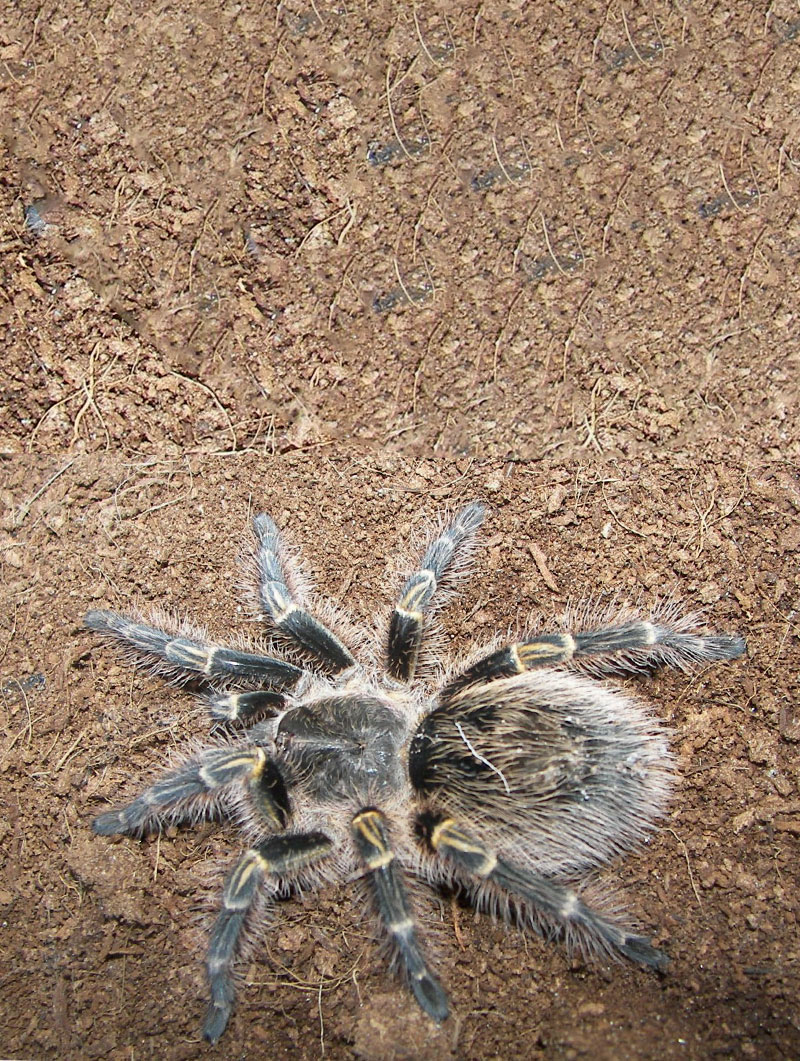Chaco Golden Knee Tarantula
Grammostola pulchripes
Description:
The Chaco golden knee tarantula is a large variety of spider. It is black or dark brown in color and has yellow markings around the knee joints.
Size:
Adult Chaco golden knee tarantulas have a 7” legspan.
Adaptations:
- A tarantula has a pair of fangs that it uses to inject venom into its prey to kill it.
- Tarantulas have hairs called urticating hairs on the sides and back of their abdomens. These hairs can be dropped or flung if the tarantula is under stress. Urticating hairs are itchy and can be irritating to the noses, mouths, and eyes of predators.
- Although they do not have bones, tarantulas and other spiders have hard external coverings called exoskeletons that give their bodies protection and support.
- Tarantulas can spin silk, but unlike other spiders, they do not use the silk to make webs that catch their prey. Instead, they use the silk to line their burrows and protect their eggs.
Diet:
In the wild, tarantulas eat insects and other arthropods. Cosley Zoo’s tarantula is fed crickets and mealworms.
Reproduction:
Mating can occur any time of year. After mating, the female lays 100-500 eggs in a silk capsule. The young hatch about six weeks later.
Shelter and space needs:
This type of tarantula is native to Argentina, Uruguay, and Brazil. It is a burrowing species.
Life expectancy:
In human care, males live to be 5-10 years old, while females live 20-25 years. Little is known about the lifespan of wild tarantulas.
Relationship with man:
Spiders make up an important part of the food chain by helping to control populations of insects, including some that prey on farmers’ crops.
Fun Facts:
- Although tarantulas are venomous animals, their venom is rarely toxic to people. No human has ever died from a tarantula bite.
- A young spider is called a spiderling.
- The exoskeleton of a tarantula does not grow. As the tarantula gets bigger, it molts (sheds) its exoskeleton.
- Spiders are arachnids, not insects. One major difference between spiders and insects is the number of legs they have. Spiders have eight legs, whereas insects have six legs.






